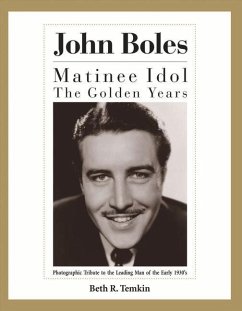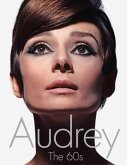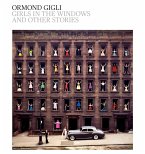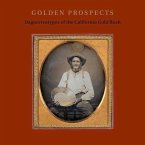John Boles (1895-1969), the matinee idol of the early 30's and first singing star of the talkies, is presented herewith in this long-overdue and first-ever pictorial book that will surely appeal to any fans who still remember him, with over 60 head-shots and stills never before published in one book, and to new fans who will be able to discern his singular magnetism and the effect he had on the movie-going public of his day. Everyone knew his name. This book covers John Boles from his musical triumphs in "Desert Song" and "Rio Rita" in 1929 to his resurgence as a star in the patriotic musical "Thousands Cheer" in 1943. In the years between, primarily under contract to Universal and Fox Studios, he appeared as romantic lead in numerous dramatic films, such as "Back Street" and "Stella Dallas", causing women in the audience to swoon and dream. Boles did not possess the burning sexuality of the heartthrob that preceded him, Valentino, instead he was refined and comfortable in his vulnerable and charming masculinity. Perhaps more important, Boles looked approachable. John Boles was the most alluring star in the movies. His place in movie history is secured as being the first major singing star of the talkies. In 1927 he was discovered and brought to Hollywood by Gloria Swanson, who had seen him perform in the light opera, "Kitty's Kisses" in New York and offered him a contract to co-star in her new silent film, "The Love of Sunya". Boles was already an accomplished singer, having studied with vocal coach Oscar Seagle in New York, as well as two years with famous operatic tenor, Jean de Reszke in France. In 1929, with the first sound version of "Desert Song", followed by the film of the stage hit "Rio Rita", John Boles' combination of stellar looks and beautiful voice catapulted him to Number One at the Box Office. However, not for long, as the public taste turned away from musicals to more strictly dramatic fare. John Boles did not suffer the same fate as those former silent stars whose voices were too effeminate or too strongly accented to be acceptable in the new talkies. Boles, with his resonantly seductive speaking voice and his immense personal charisma, appeared in picture after picture as a leading man to actresses such as Loretta Young, Irene Dunne, Barbara Stanwyck, Joan Bennett, Rosalind Russell and opera singer Gladys Swarthout. During this time, he was fortunate to appear in two movies where he is now known to legions of science fiction fans only as Frankenstein's nephew, and to Shirley Temple fans only as Shirley Temple's Dad in both "Curly Top" and "The Littlest Rebel". This versatile actor achieved a career that included silent films in the late 20's, being the first singing matinee idol and romantic lead in numerous films of the 30's, and to appear on the Broadway stage once again as Mary Martin's co-star in "One Touch of Venus" in 1943. The purpose of this book is to stimulate interest in and encourage the resurrection of John Boles film successes favorably reviewed at the time, such as "Seed", "The Age of Innocence", and "Rose of the Rancho". John Boles, once experienced, can never be forgotten.
Hinweis: Dieser Artikel kann nur an eine deutsche Lieferadresse ausgeliefert werden.
Hinweis: Dieser Artikel kann nur an eine deutsche Lieferadresse ausgeliefert werden.








